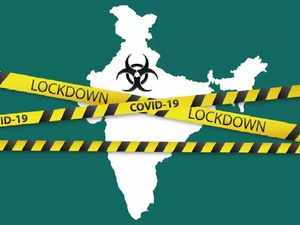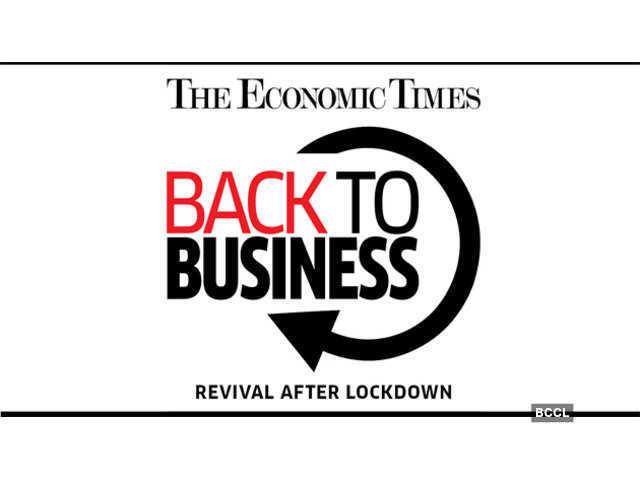
The heavy-handed lockdown, implemented by the good old Indian ‘steel frame’, while slowing down the spread, gave time for the administration to prepare adequate healthcare facilities.

COVID-19 CASES
WorldIndiaConfirmed17,656Deaths559Confirmed2,401,379Deaths165,044India has entered the next phase of its unique lockdown strategy, one that will determine if it can create a ‘new normal’ in which Covid 19 cases can be kept within manageable limits, while measures to reboot the economy are set into motion. The challenge is to do so without offsetting the gains made so far.
So, how exactly is Lockdown 2.0 different from its first edition? It’s important to understand this, if one needs to figure out why India believes it can find a way to do business alongside the pandemic. All major economies, including the US, do recognise the fact that some amount of risk would be necessary to resume economic activity. But their methods and models vary.
The Indian model has, so far — as I had mentioned in a previous column (
bit.ly/2VGwbaM) — relied heavily on its public administration system to slow down the pandemic. This was, in fact, the cornerstone of the first phase of the lockdown strategy. Reason: Unlike the US or South Korea, the Indian public healthcare system couldn’t have taken the load of a fast-spreading epidemic, especially when no one had an idea how it would play out here.

The heavy-handed lockdown, implemented by the good old Indian ‘steel frame’, while slowing down the spread, gave time for the administration to prepare adequate healthcare facilities. Two quick empirical learnings helped – first, not a large number of infected individuals actually required intensive care; and second, knowing the extent of infection through testing was the only way to get a move on from the lockdown.
The data is quite instructive. As of midday April 19, there were 166 patients — 87 in intensive care unit (ICU), 24 on ventilator and 55 on oxygen — in need of critical or intensive care. As the total number of people infected by the virus crossed 17,000 on Monday, what’s becoming clear is that a large number of hospitalised Covid-19-positive patients improved with basic medical care.
GoI has, thus, realised that even if it worked on a worst-case scenario of say, 10 lakh infected persons, then about 2 lakh may require critical care. From an administrative standpoint, this now appears doable. A 3-tier system has been worked out in which a patient first goes to a place with basic medical care, and is transported to the next hospital with intensive care if the situation deteriorates. In some places, the patient may have to be shifted to a bigger facility for critical care.
The problem then comes down to managing the numbers requiring basic medical care. And that could be arranged by having makeshift medical facilities, if needed. GoI may, at some point, have to take a call on the viability of advising home quarantine as an option.
So, as of now, GoI feels better prepared from a healthcare standpoint. This means that if the extent of spread can be determined, then a graded exit plan, starting with the least affected areas, is possible. Which is what the government seems to be trying to do. But its efficacy would depend on the success of its testing strategy.
There are two tests — RT-PCR (real-time reverse transcription polymerase) for detecting the virus, and Rapid tests for surveillance purposes. At no point should it be considered that Rapid tests, used for screening, can definitively tell infection. They can tell us if a person, who may have been infected, has developed antibodies to resist the virus.
When deployed across a community, the Rapid test can tell if people residing in a particular area have developed immunity. These tests are expected to be helpful in monitoring patterns in a hotspot or a containment zone. The assumption is that this will help remove areas from a hotspot in due course.
Testing, in general, is being ramped up with the aim of conducting 50,000 RT-PCR tests daily by the first week of May. While the criteria for testing has not been changed, what’s clear is GoI is now keen to carry out testing in large numbers, since it’s only through this route can an exit from the lockdown be charted.
In other words, Lockdown 2.0 itself is the first step in a staggered approach towards lifting restrictions. The distinguishing features of the second phase, compared to the last one, are increased testing, community surveillance through Rapid testing and partial easing up in least affected areas.
The big gamble here is that GoI, while prepared for a slight surge, is not expecting an exponential increase in the number of infected people. To be doubly sure that this administrative assumption stays accurate, the emphasis on social discipline by way of distancing and travel restrictions will remain.
From here on, the challenge for GoI is to demonstrate that having managed the problem on the health front, it can script an economic comeback, however modest the gains. Given that India’s main commercial centres are worst affected by Covid-19, the first attention will go to boosting rural consumption and related infrastructure.
The task is uphill. But politically, the crisis is an opportunity for Prime Minister Narendra Modi to seize. If performance on the health front by way of dealing with Covid-19 was the yardstick of success for the lockdown period, then delivery on the economic side will be the barometer of success from here on.
(Views expressed are author’s own)
Source: indiatimes.com

